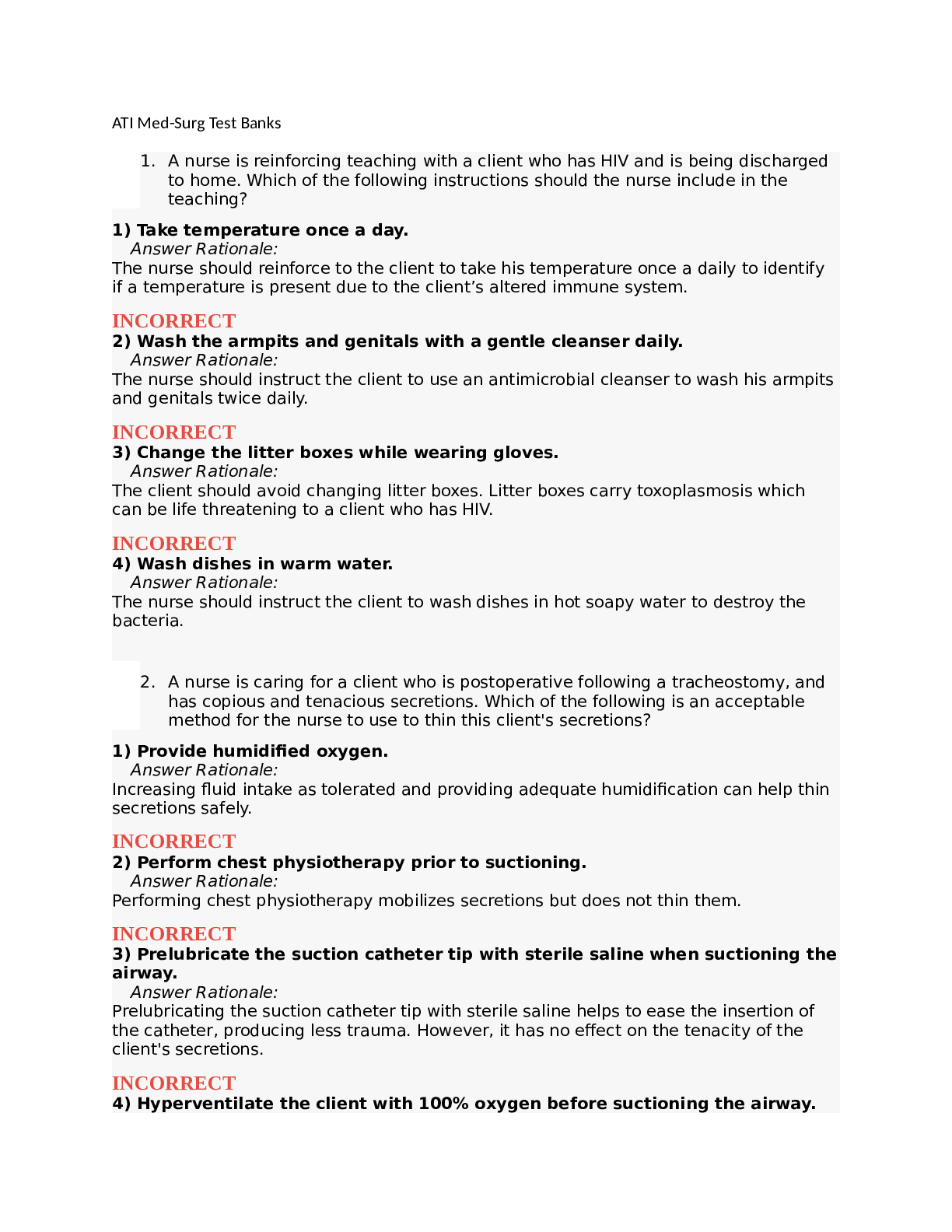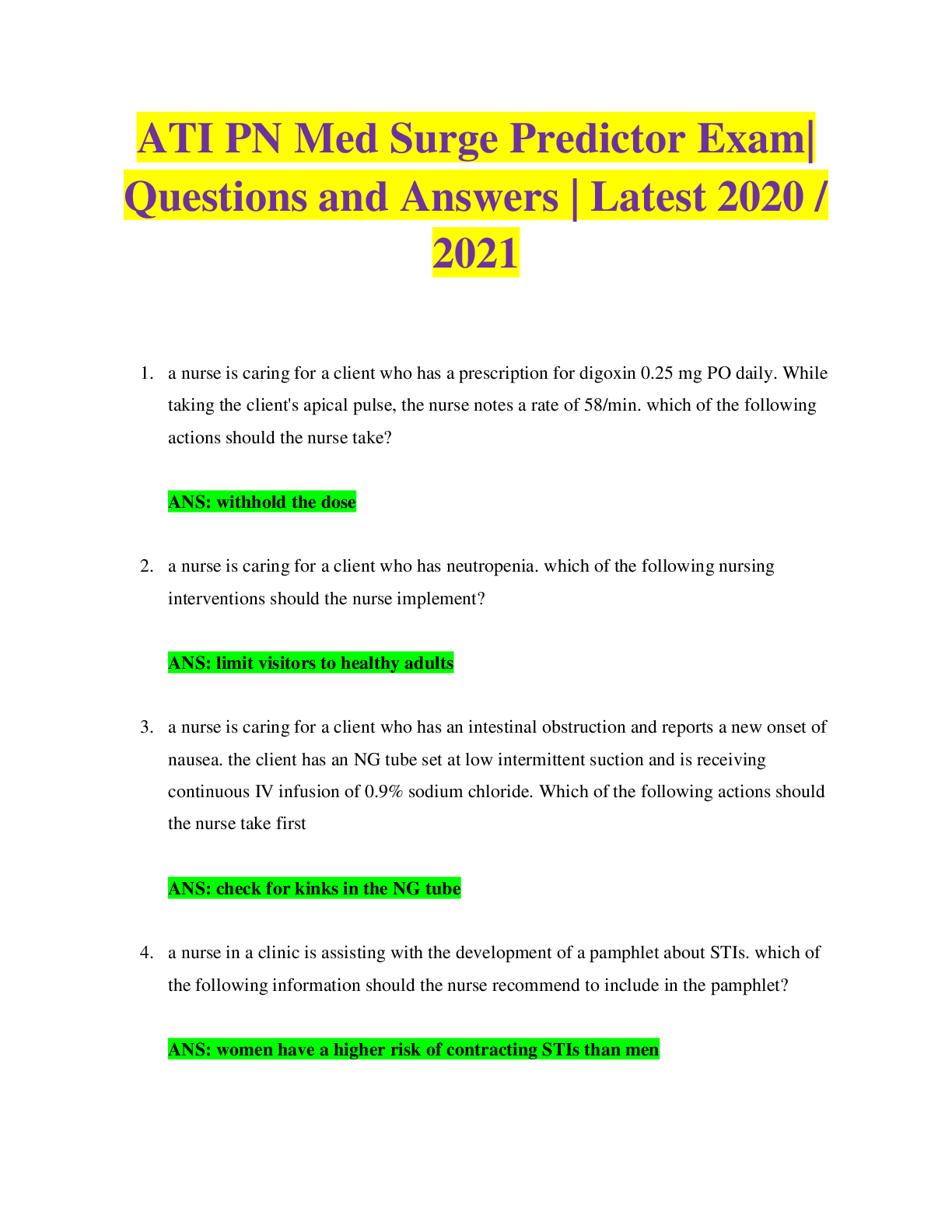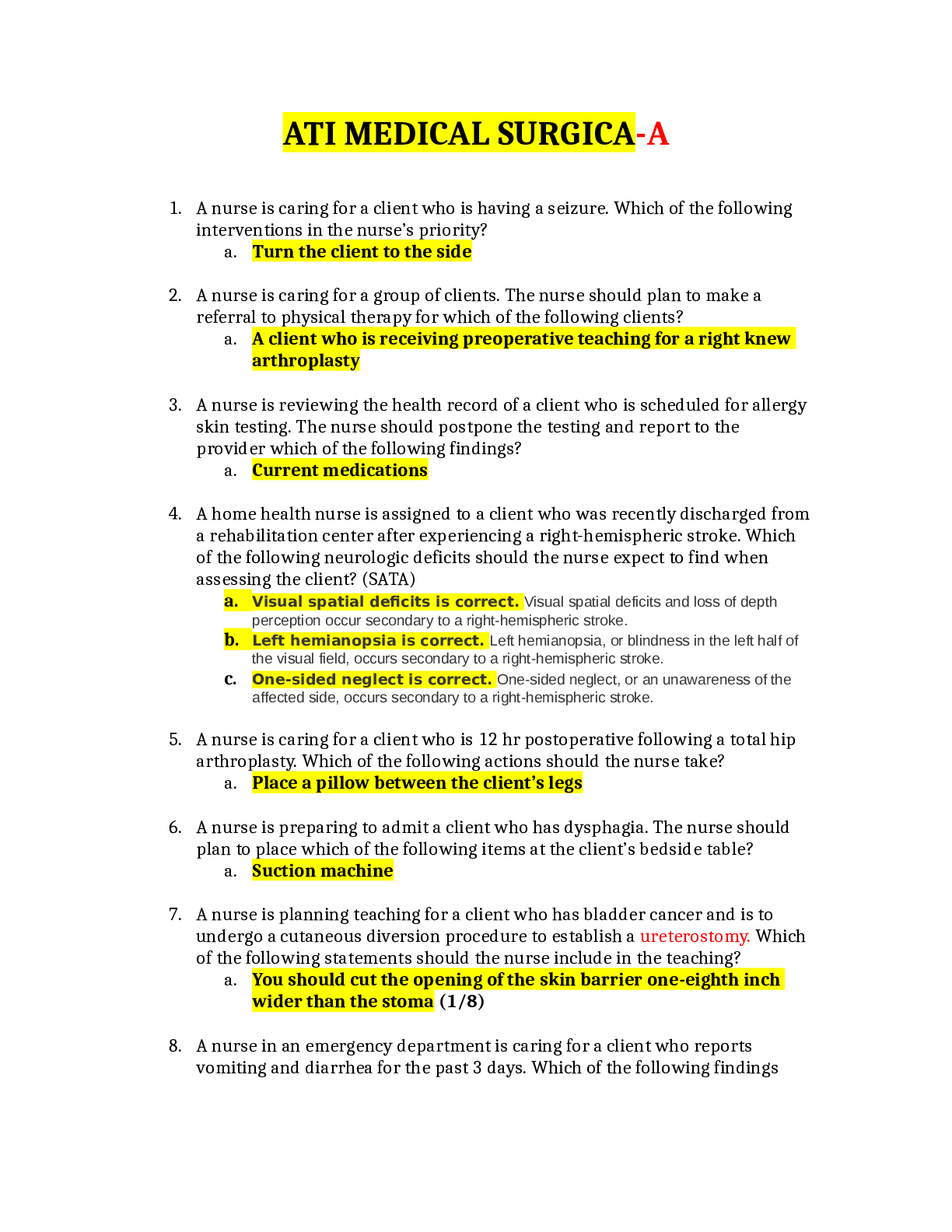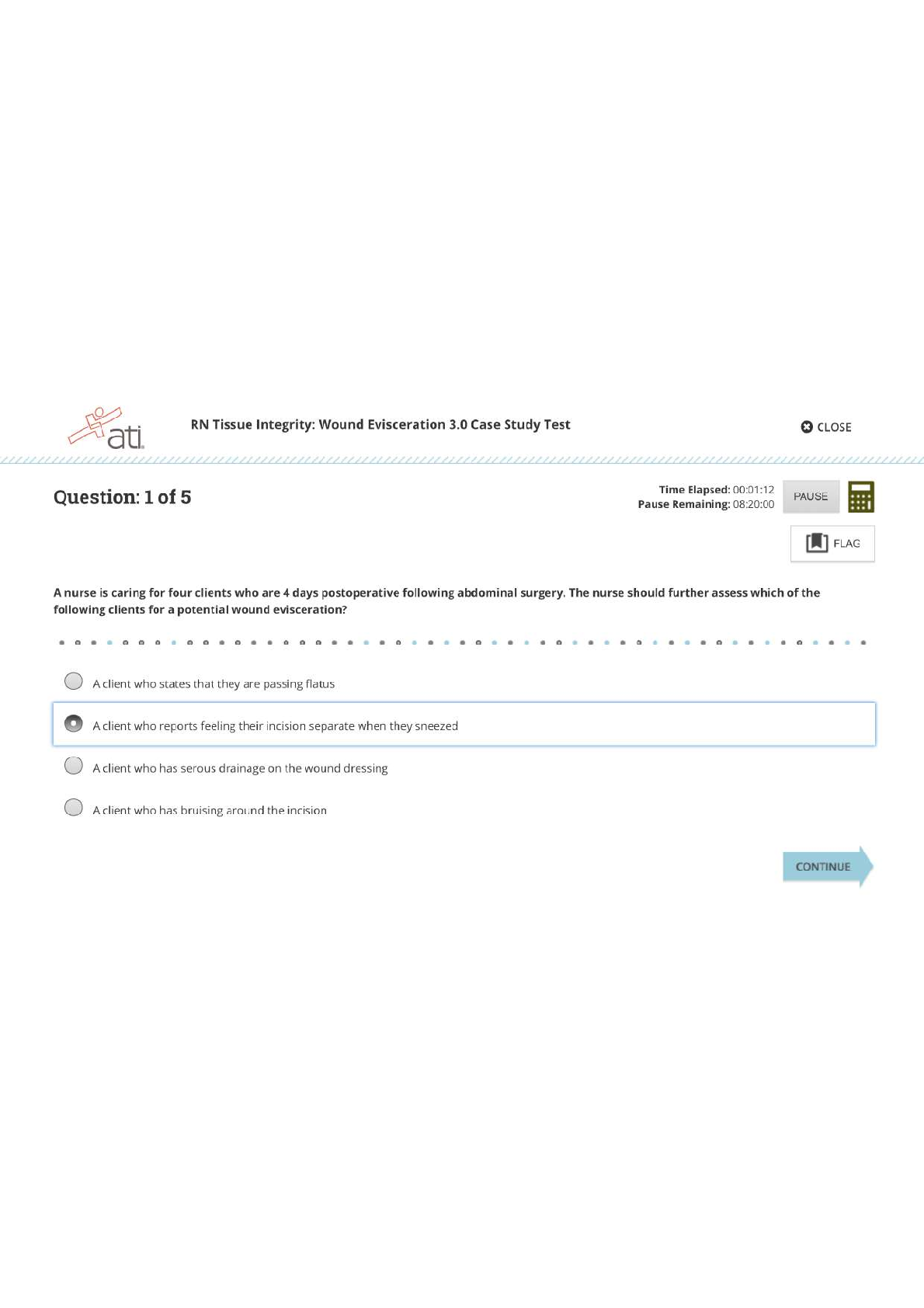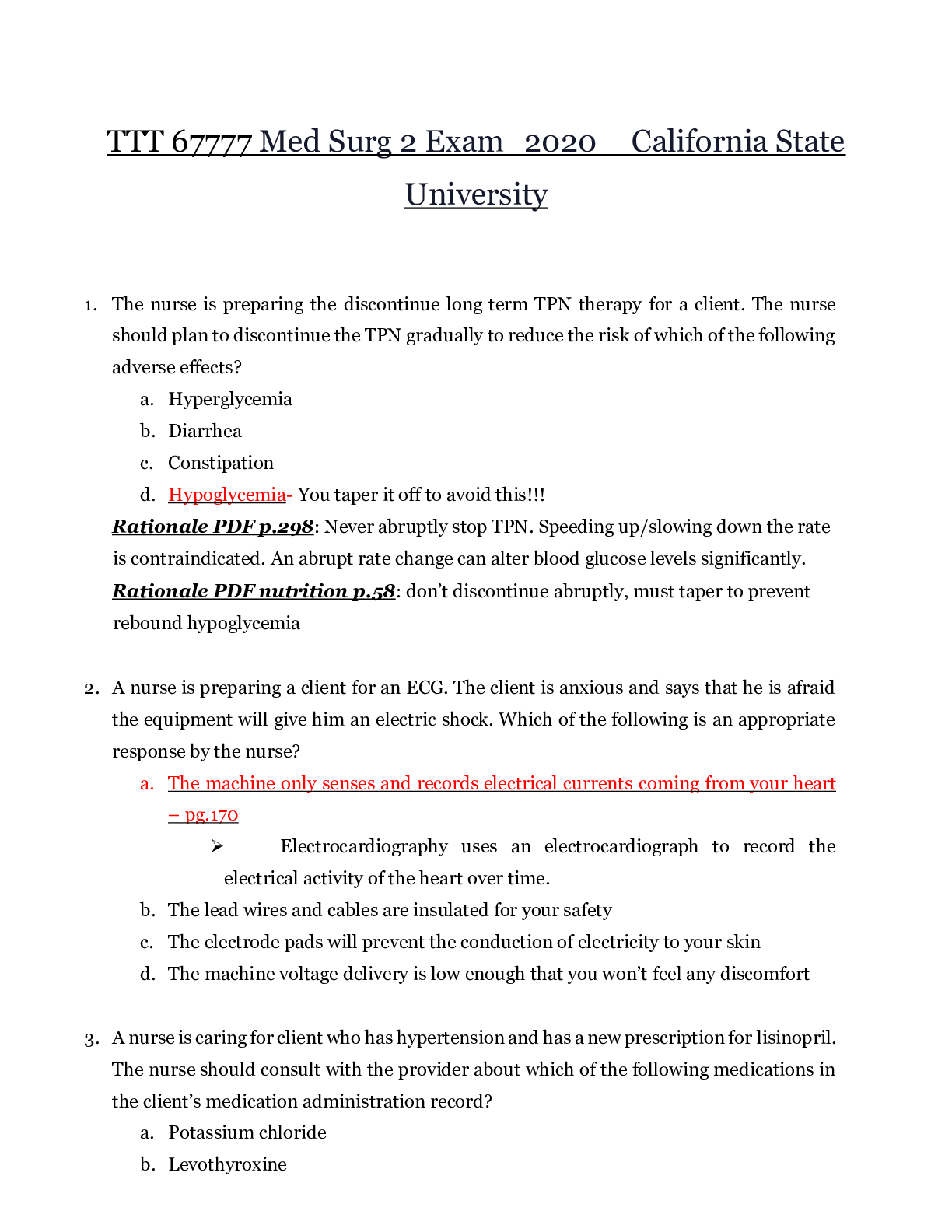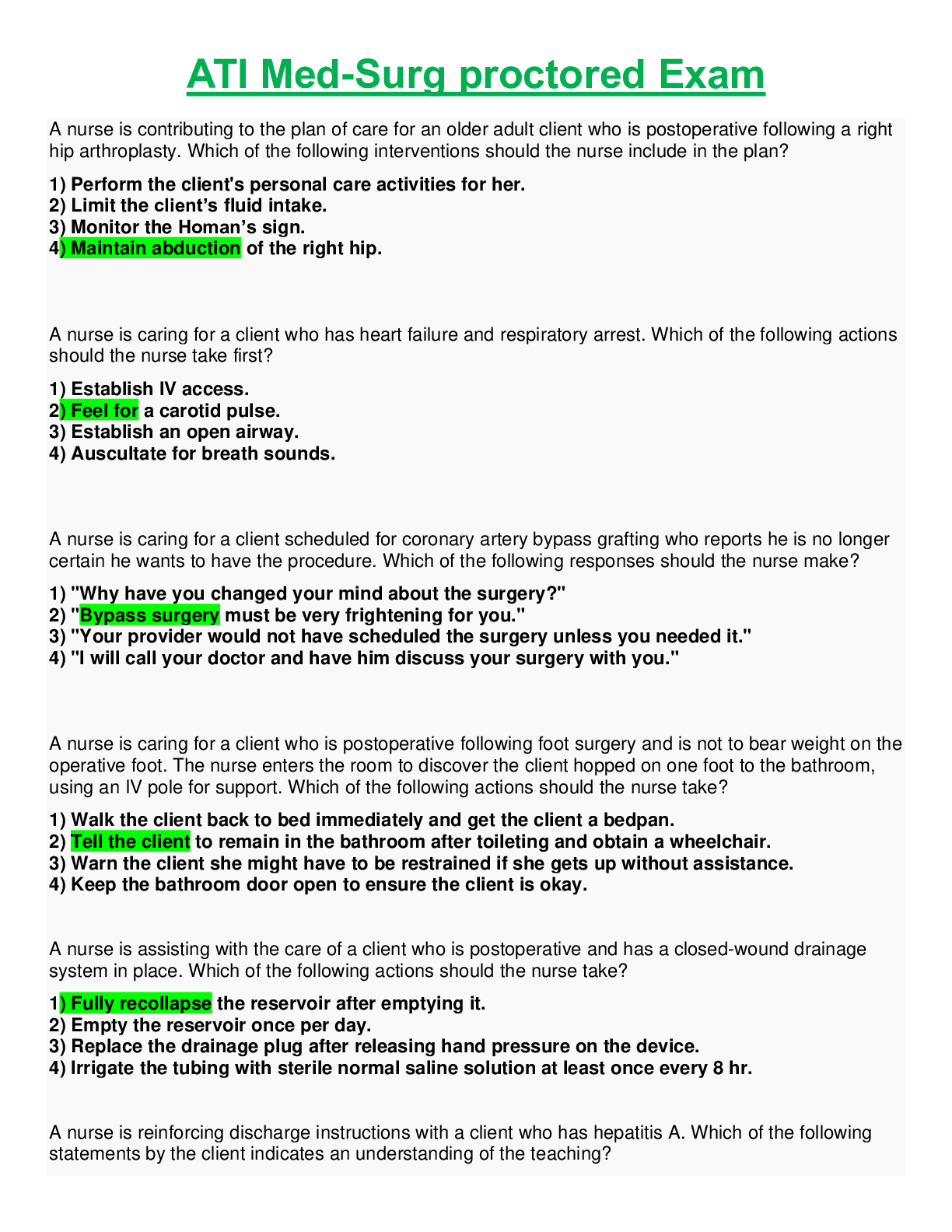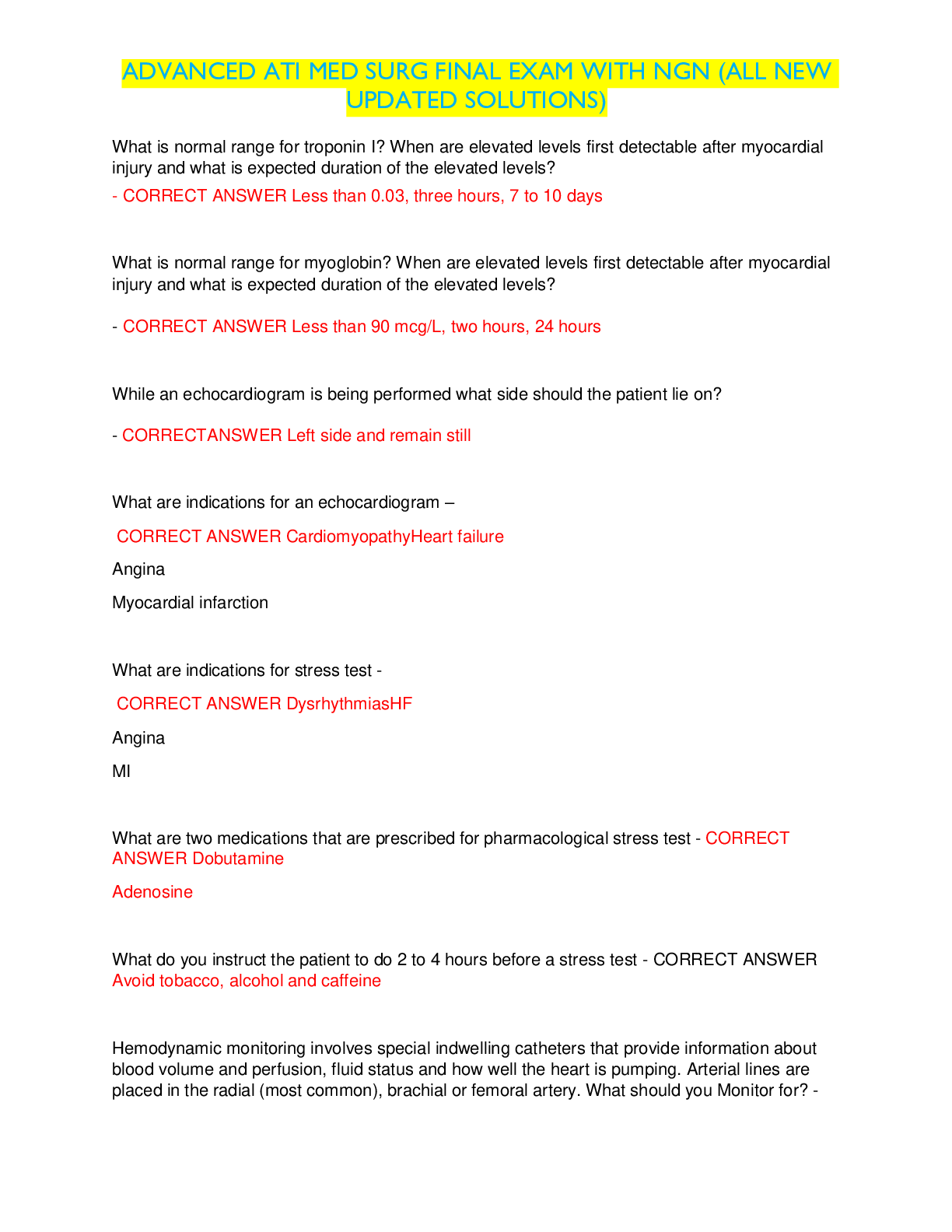*NURSING > ATI MEDICAL SURGICAL > Perioperative Nursing Care Med Surg, complete guide_latest summer 2021 (All)
Perioperative Nursing Care Med Surg, complete guide_latest summer 2021
Document Content and Description Below
Perioperative Nursing Care Med Surg Perioperative Nursing Care Perioperative - includes pre, intraoperative, post operative care Pre operative- from the decision of surgery until patient goes int... o the OR Intraoperative- In the OR until their in the post ECHO Phases of Perioperative Nursing ● Preoperative phase: period of time from decision for surgery until patient is transferred into operating room ● Intraoperative phase: period of time from when patient is transferred into operating room to admission to postanesthesia care unit (PACU) ● Postoperative phase: period of time from when patient is admitted to PACU to follow-up evaluation in clinical setting or at home ● Sidebar: golytely- laxative and electrolytes for bowel cleansing Preadmission ● Initiates initial preoperative assessment ● Initiates teaching appropriate to patient’s needs ● Operative processes-when, where, how, who, what ● Post-operative teaching-PACU processes, monitoring, catheters ● Involves family in interview if possible ● Verifies completion of preoperative diagnostic testing- time frame of labs needed, radiological studies, medical clearance ● Verifies understanding of surgeon-specific preoperative orders: medications and diet restrictions. ● Other preparations: Bowel prep, shaving, labeling of site ● Discusses, reviews advanced-directive document ● Begins discharge planning by assessing patient’s need for postoperative transportation, care ● Cholecystectomy- surgical removal of the gallbladder ● Initiates teaching appropriate to patient’s needs- 1st thing you should ask if tell me what the doctor you about your surgery- gives you a sense of what the pt. understands, explain that the will be using an incentive spirometer Preoperative Assessment ● Labs that may be need to be completed before surgery- CBC because post operative ECHO, CMP (complete metabolic panel ), renal fcn, liver fcn, coagulation panel (if they’re on Heparin, etc.) ● Smokers or people over 50 or 60- need Chest X ray before surgery to see if there's respiratory compromise ● Much higher risk for infection if you shave instead of clip the hair before surgery (don’t shave!) ● Healthcare proxy, living wills- nurses can be a witness ● Only doctors can be witnesses for advance directives Special Considerations During Preoperative Period ● Patients who are obese- increase risk of infection & post-operative complications including dehiscence, post-op education ● Patients with disabilities-mobility issues- post-op education ● Patients undergoing ambulatory surgery- when to arrive, pre-op preparations, post-op educations ● Patients undergoing emergency surgery-consent, family members, belongings, post-op education ● Dehiscence vs. Evisceration ● Dehiscence - opening of the surface of the wound ● Evisceration- AB contents that protrude from the wound Medications That May Affect Surgical Experience ● Corticosteroids-cardiovascular collapse with sudden d/c ● May need IV post-op ● Diuretics-affects electrolytes ● Tranquilizers-seizure if d/c’d suddenly ● Insulin-may be held or given IV ● Antibiotics-potential for interaction with muscle relaxers (includes anesthesia) ● Anticoagulants-potential for intra or postoperative bleeding. Held for pre-op duration varies ● Antiseizure medications- seizure activity if not given-IV may be needed ● Thyroid hormone-may need IV ● Opioids-potential for interaction with anesthesia and increased need postop (has a cumulative effect) ● OTC and herbals-may interact with medications ● Corticosteroids- needed for Autoimmune DOs, etc. ● Tranquilizers- ex. anxiolytics ● Anticoagulants- 81 mg- Aspirin- prevent cardiovascular events (Ex. MI) to make the platelets more slippery Informed Consent ● Should be in writing ● Should contain the following: ● Explanation of procedure, risks ● Description of benefits, alternatives ● Offer to answer questions about procedure ● Instructions that patient may withdraw consent ● Statement informing patient if protocol differs from customary procedure ● Valid consent must be freely given, without coercion ● Patient must be at least 18 years of age (unless emancipated minor) ● Consent must be obtained by physician ● Patient’s signature must be witnessed by professional staff member ● Pelvic exenteration- for someone with recurrent endometriosis- remove vagina, rectum, bowel….give a urinary diversion with an ileostomy and all the rest of the ab contents are removed ● Continent urinary diversion – rare. There’s usually a lot leakage from the stoma so a bag is used ● Patient’s signature must be witnessed by professional staff member (nurse can be there ONLY for the signing- not the best thing but its allowed) Incompetent Patient ● Individual who is not autonomous ● Cannot give or withhold consent ● Cognitively impaired ● Mentally ill ● Neurologically incapacitated Patient Education ● Deep breathing, coughing, incentive spirometry ● Mobility, active body movement-leg lifts, foot exercises, use of assistive devices. ● Pain management-splinting, medications-dispelling myths ● Patient controlled analgesia (PCA) ● Cognitive coping strategies-guided imagery, distraction, music ● Instruction for patients undergoing ambulatory surgery ● PCA- on demand dosing- can be continuous with a bolus for pain or non continuous and when patient feels pain they press the button General Preoperative Nursing Interventions ● Providing psychosocial interventions-education ● Reducing anxiety, decreasing fear ● Respecting cultural, spiritual, religious beliefs ● Maintaining patient safety- ● Managing nutrition, fluids-NPO after midnight most common order ● 2 hours clears for most ambulatory settings ● 4 hours dairy ● 8 hours fatty foods ● Preparing bowel-Golytely-polyethylene glycol powder mixed with water ● 3-4 Liters: drink 8 oz glass every 10 minutes ● Return begins in 1 hour ● Preparing skin-wash with germicidal soap, removing hair with clippers ● Valid consent must be freely given, without coercion ● Patient must be at least 18 years of age (unless emancipated minor) ● Consent must be obtained by physician ● Patient’s signature must be witnessed by professional staff member ● Side Rails- Echo ● clears – if you can hold it up and can see light through it- Ex. BLACK coffee, apple and grape juice, orange juice is NOT a clear ● Return begins in 1 hour- means Pt should start emptying their bowels ● Nurses responsibility to log the belongings of pts so you want to make sure the belongings are given to the family members so you don’t have to log the belongings Immediate Preoperative Nursing Interventions ● Change into hospital gown ● Jewelry removed-including piercings. Sometimes may tape wedding ring ● Voiding ● Personal belongings-given to family, lockers in ambulatory surgery ● Administering pre-anesthetic medication ● Maintaining preoperative record-consent ● Transporting patient to pre-surgical area ● Attending to family needs Members of the Surgical Team ● Patient- ● Circulating nurse- Responsible for the maintaining sterility, procedures and documentation. Surgical instrument count documentation ● Time-out: All personnel need to be present-equipment in place ● Affirmation of: Right Patient, Right Procedure, Right Site, Right doctor, etc ● Verbalizing any possible complications with steps in place to address ● Scrub role-technician or RN- manage instruments, 2nd person responsible for count ● Surgeon(s) may be attending and resident assistants ● Registered nurse first assistant-specialized certification required ● Anesthesiologist, Nurse-Anesthetist ● Circulating nurse- In charge of the OR, responsible for the procedure Prevention of Infection ● Surgical environment ● Unrestricted zone-Holding area, reception area (family members may be allowed to be there) ● Semirestricted zone-outer arena of OR-scrub sinks, equipment storage, ● Restricted zone- surgical area: Scrub attire & masks required ● Surgical asepsis-reduce post-operative infections ● Scrub attire (surgical scrubs), shoe coverings, hair coverings, masks, equipment sterilization, scrubbing in, all materials in contact with patient should be sterile. ● Drapes, prep ● Environmental controls-Air, temperature (68-73° F), low humidity ● To reduce postoperative infection ● Once you’re in the OR and WITHIN 3 feet of the sterile field- you must scrub in ● Cold temp- keeps bacteria down Basic Guidelines for Surgical Asepsis ● All material within sterile field must be sterile ● Gowns sterile in front from chest to level of sterile field, sleeves from 2 inches above elbow to cuff ● Only top of draped tables considered sterile ● Items dispensed by methods to preserve sterility ● Dropped onto field ● Movements of surgical team are from sterile to sterile, from unsterile to unsterile only ● Movement at least 1-foot distance from sterile field must be maintained ● When sterile barrier is breached, area is considered contaminated ● Every sterile field is constantly maintained, monitored ● Items of doubtful sterility considered unsterile ● Sterile fields prepared as close to time of use • 2 inches above the elbow to the cuff is considered sterile • If sterile area is breeched, must change out everything because everything's now non sterile • Up to circulating nurse to make sure everything remains sterile Anesthesia *********************************CONTINUED********************************************** [Show More]
Last updated: 1 year ago
Preview 1 out of 17 pages

Reviews( 0 )
Document information
Connected school, study & course
About the document
Uploaded On
Apr 30, 2021
Number of pages
17
Written in
Additional information
This document has been written for:
Uploaded
Apr 30, 2021
Downloads
0
Views
34

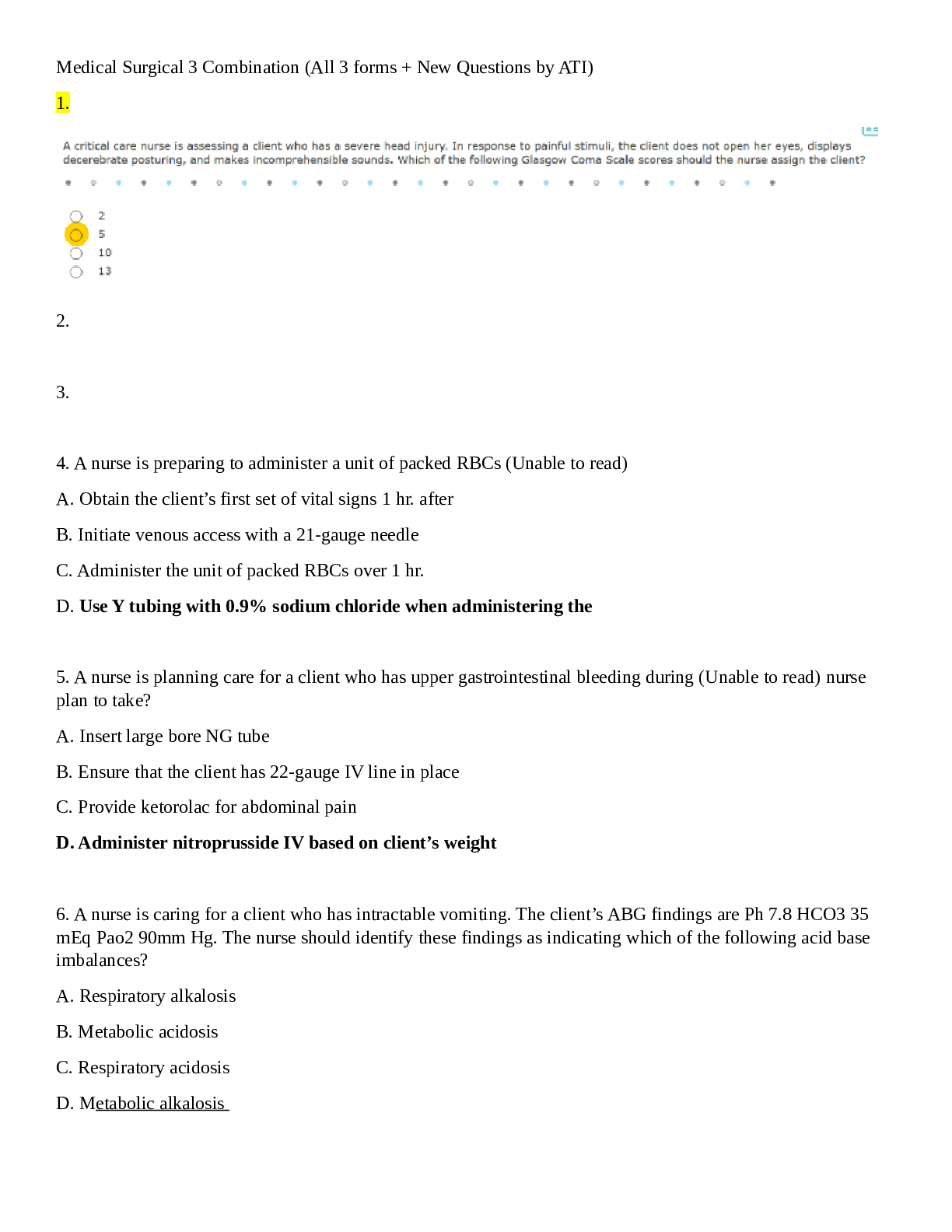
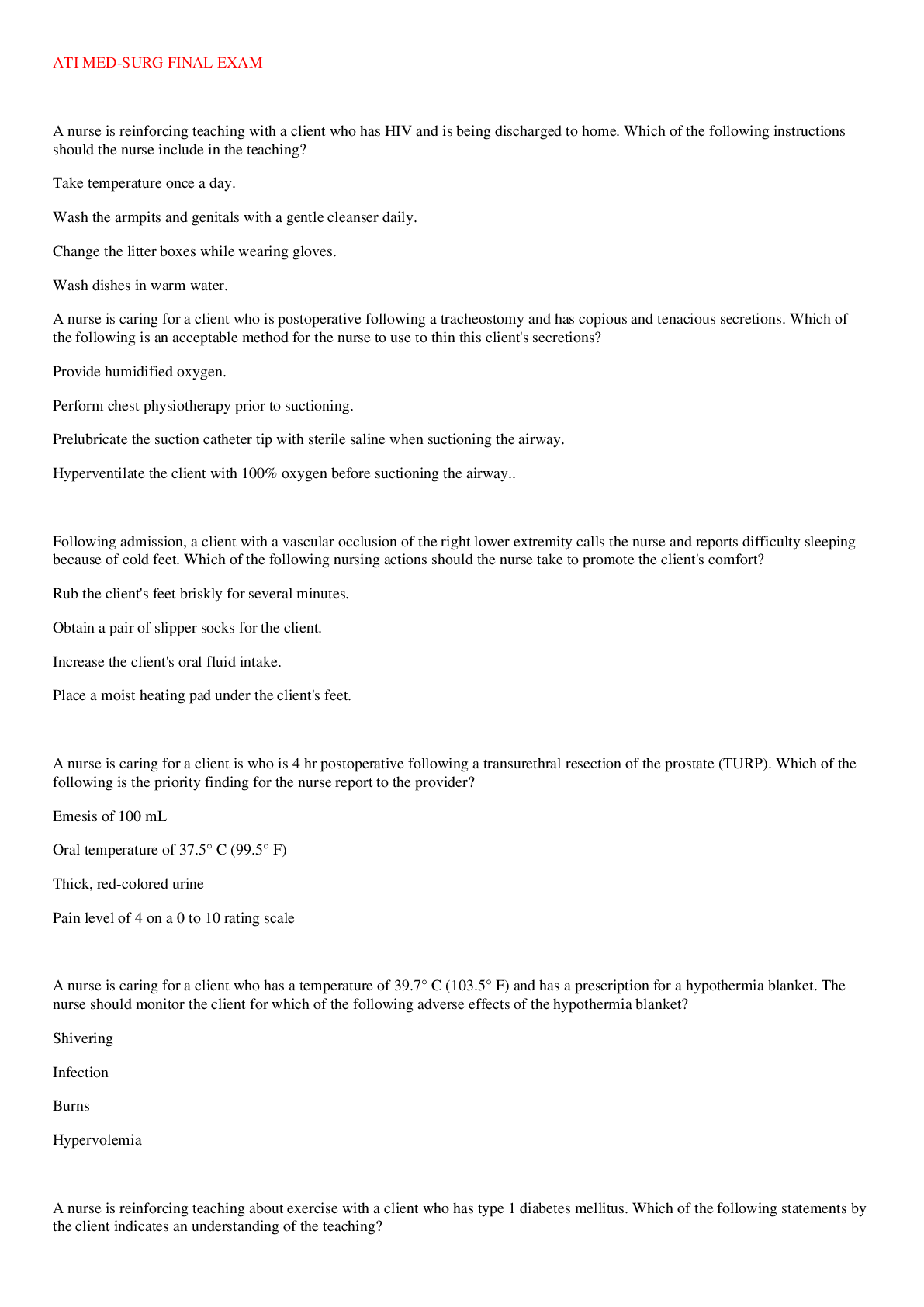

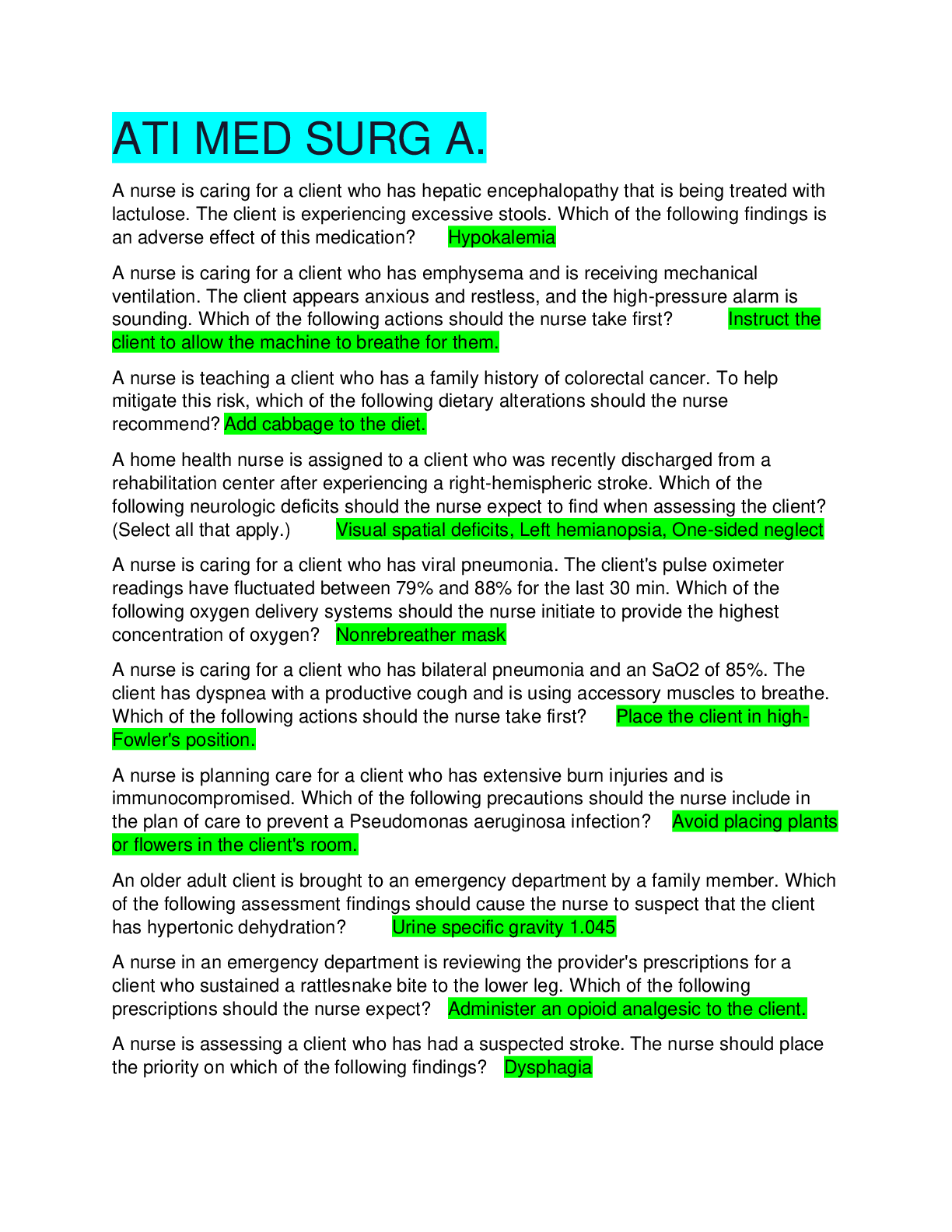

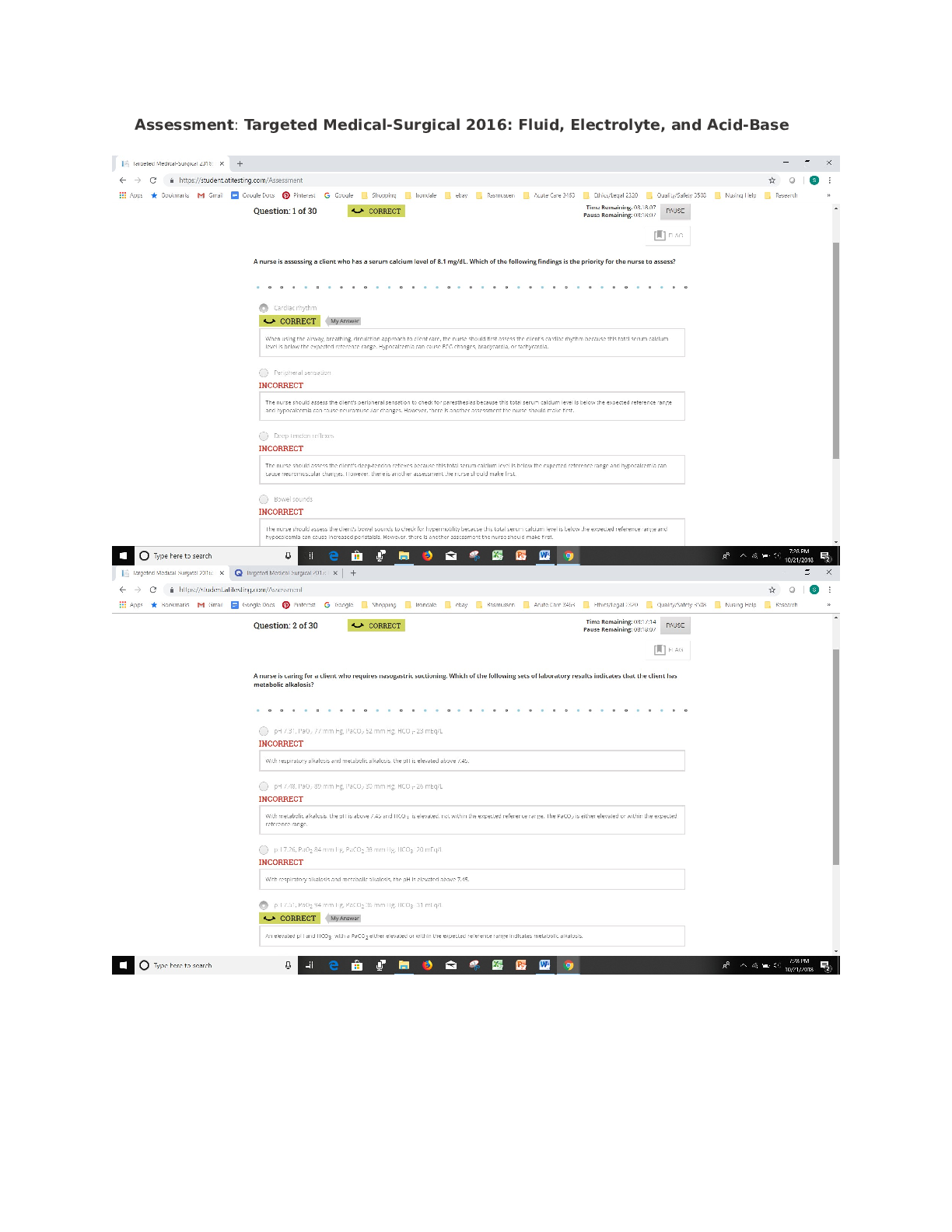
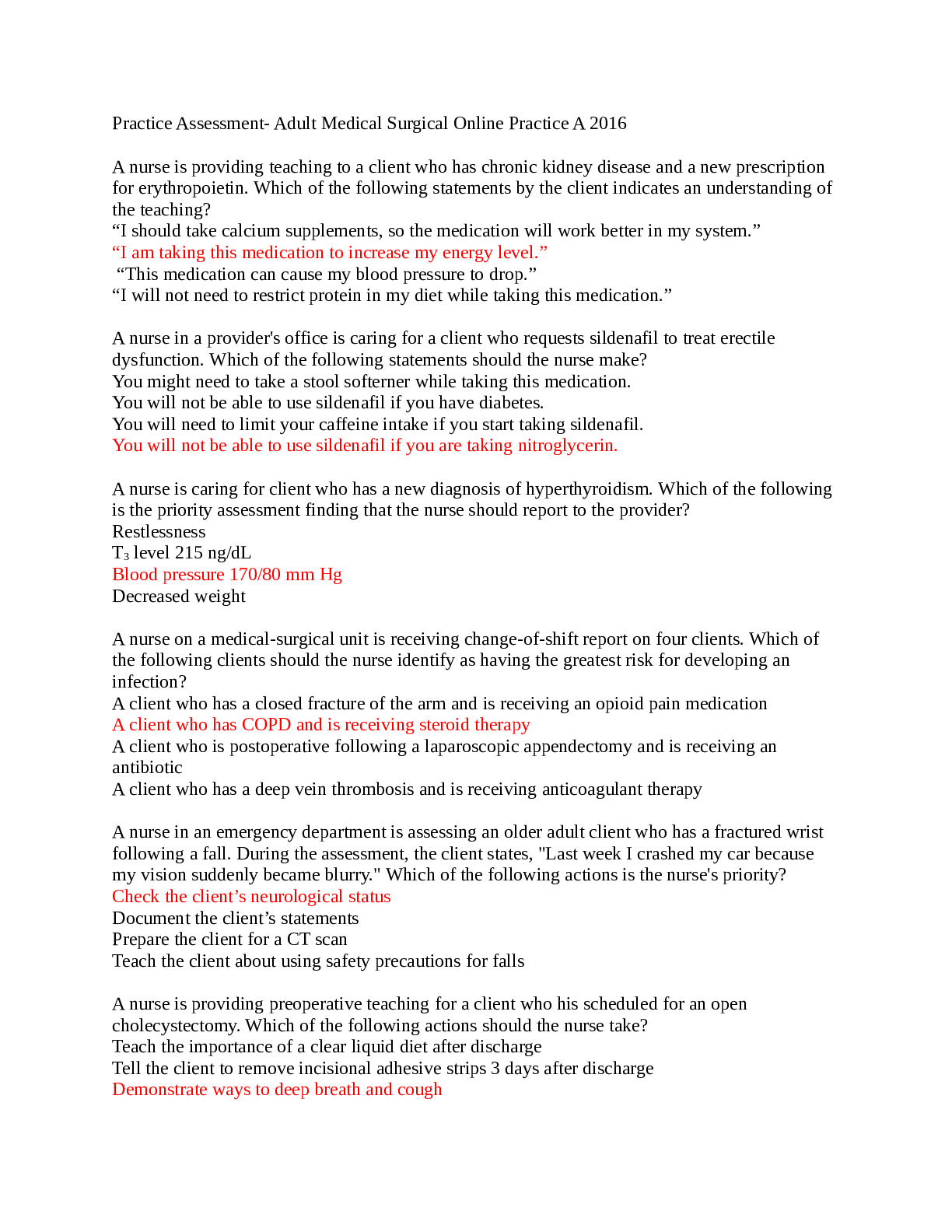
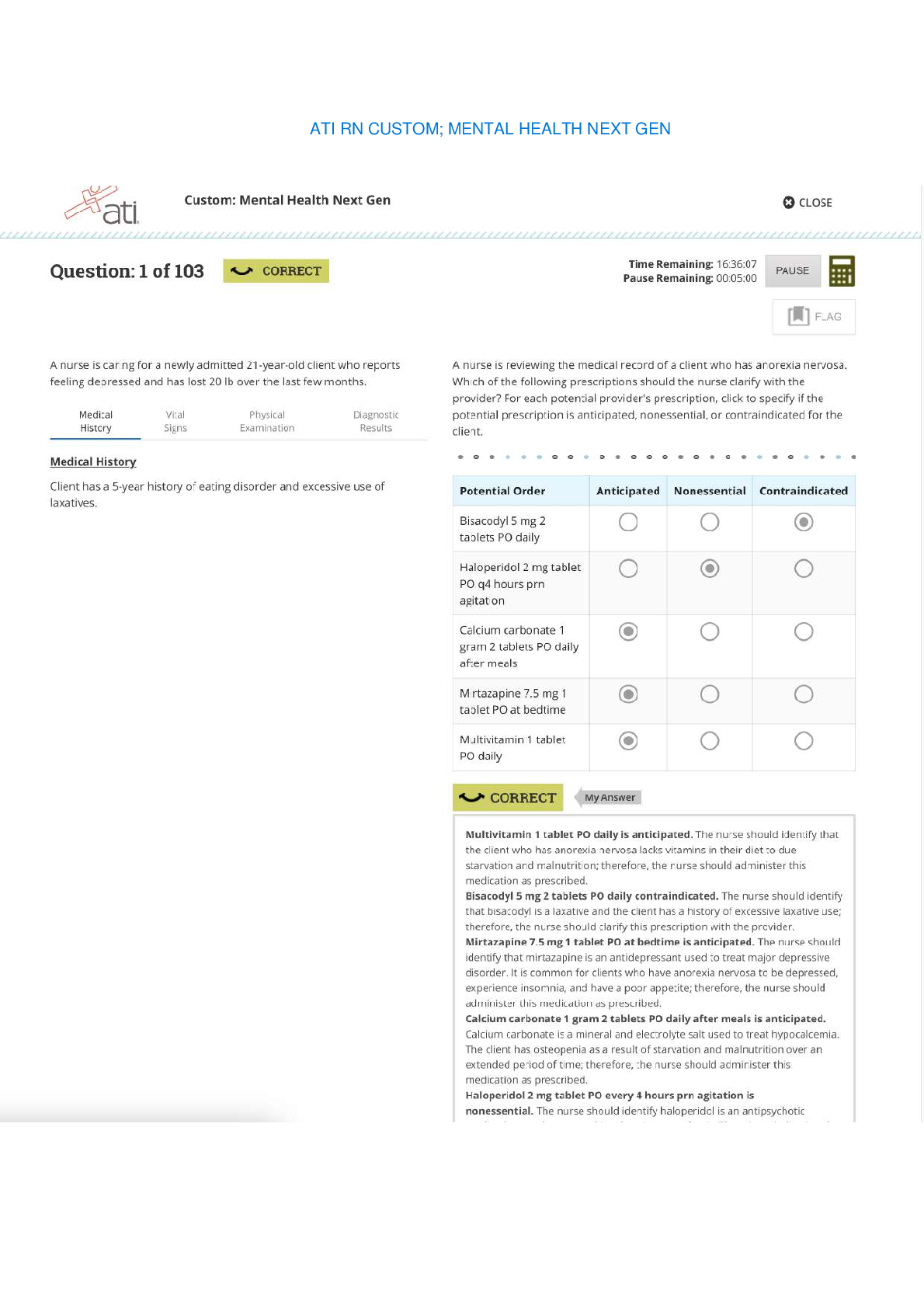
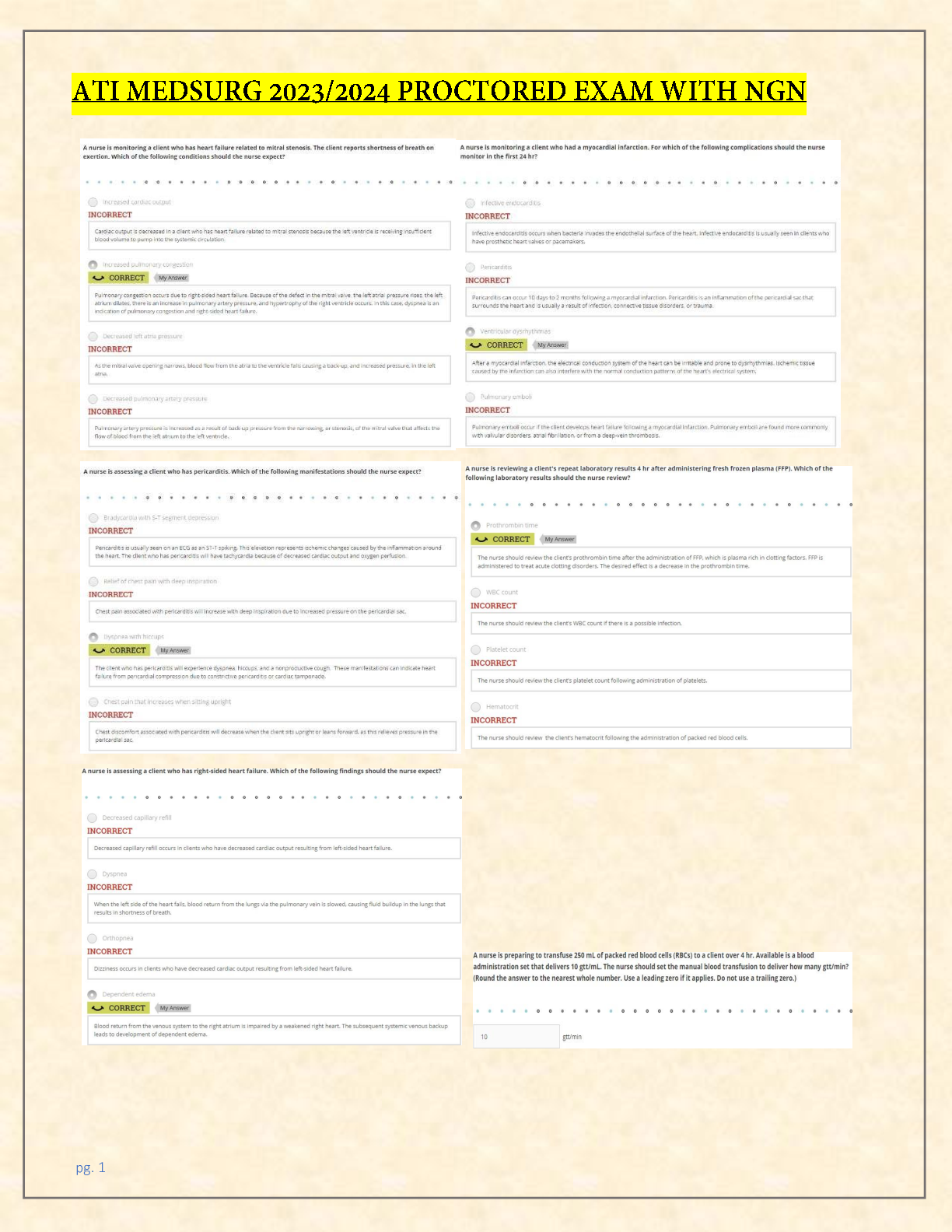
 – Chamberlain College of Nursing.png)


